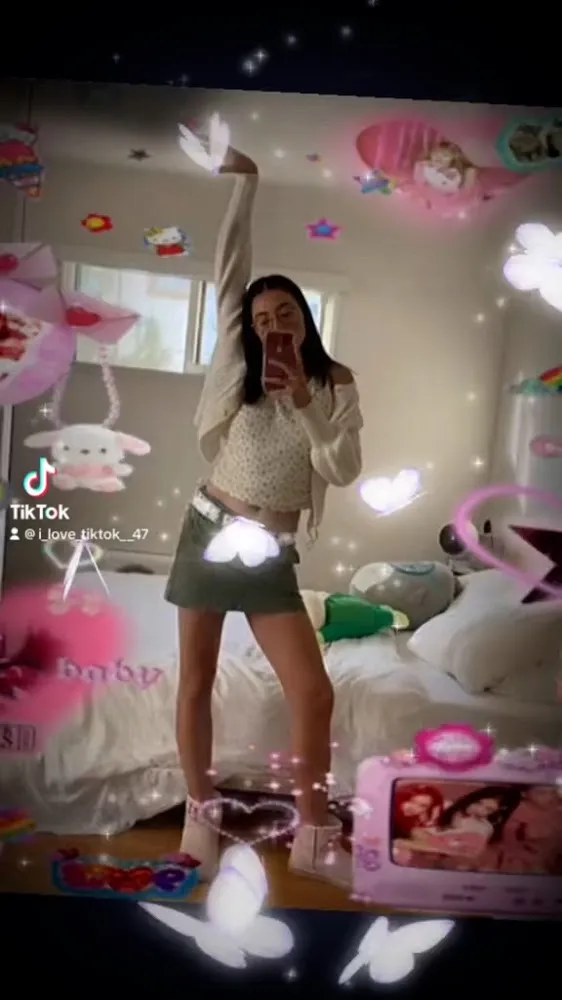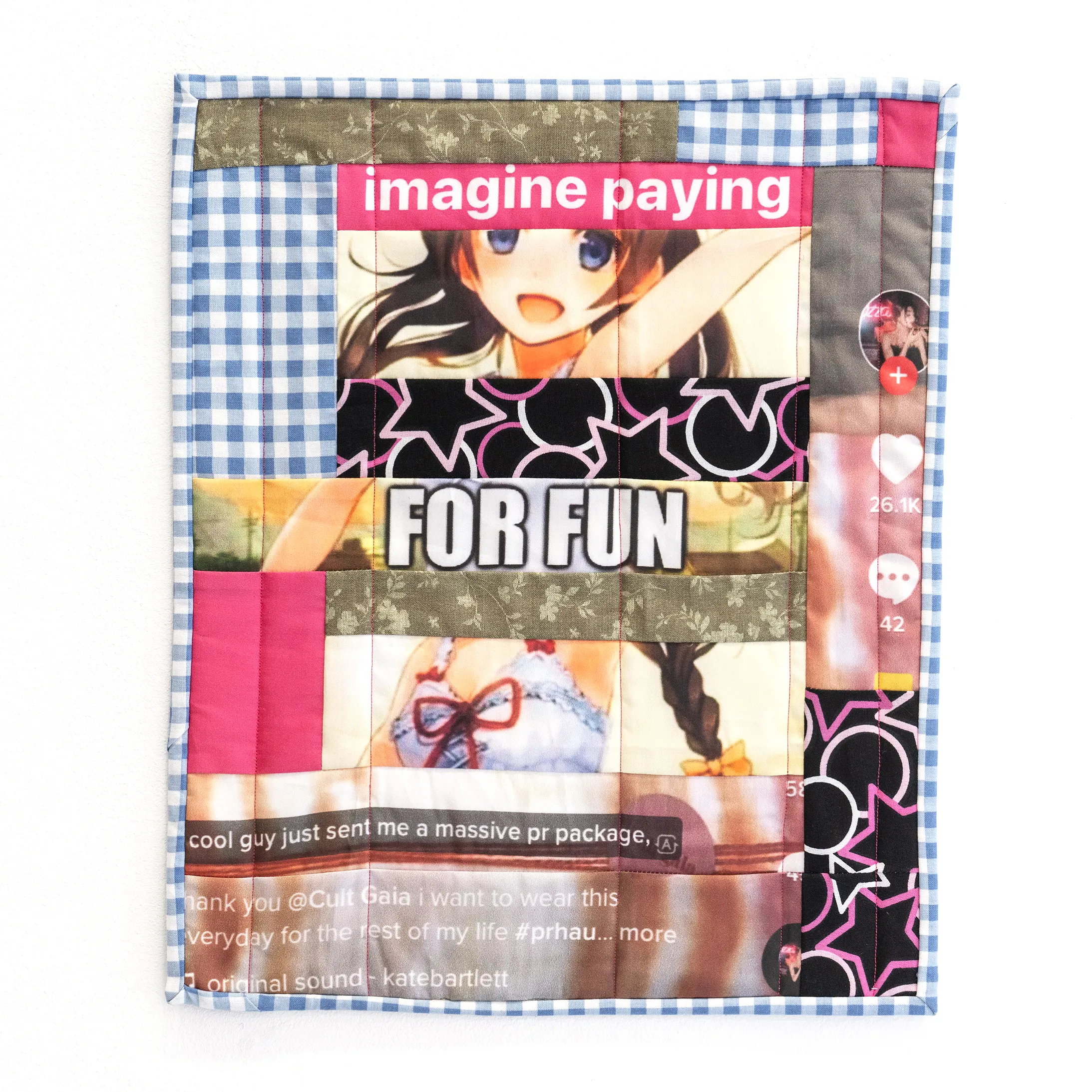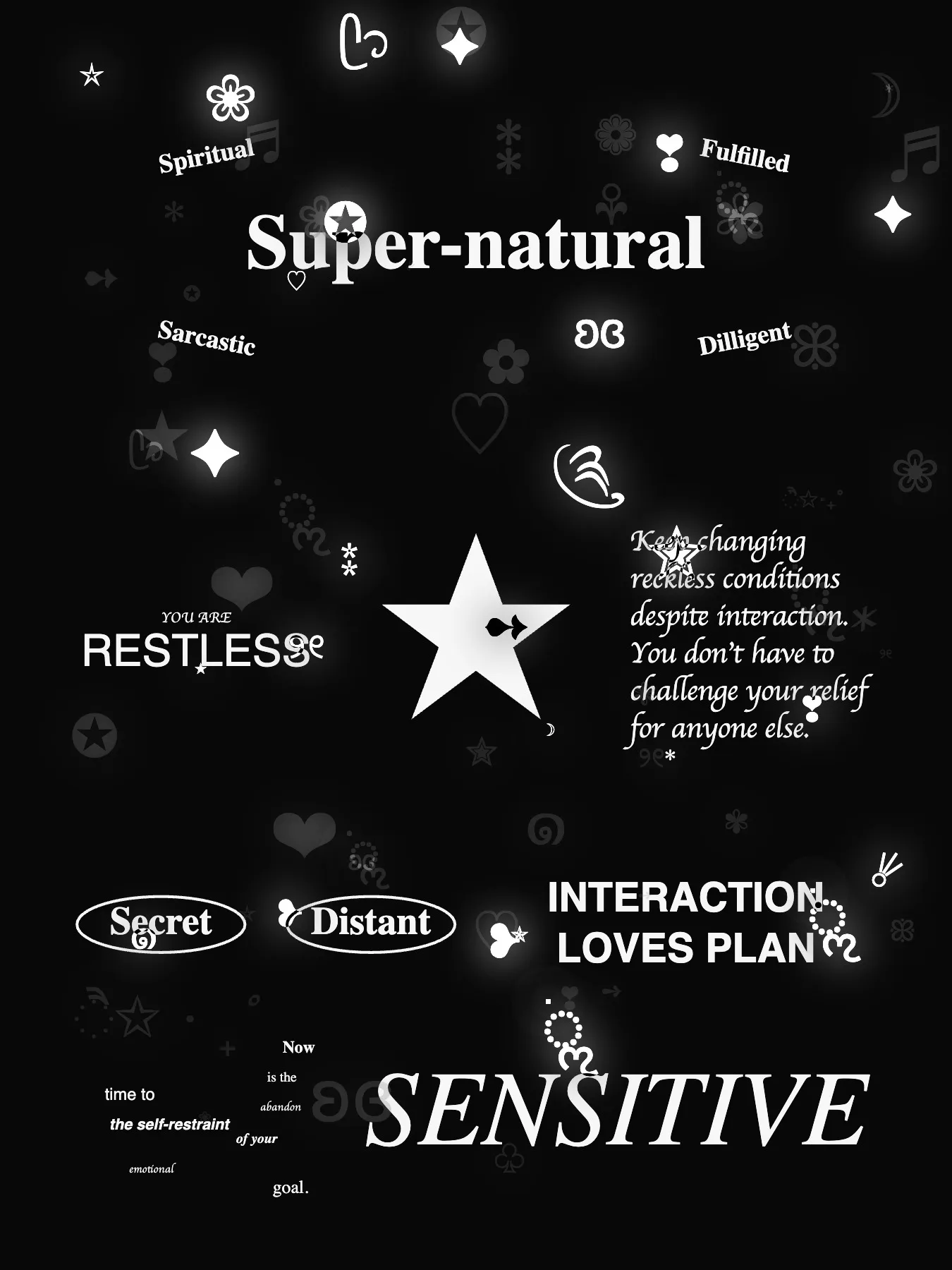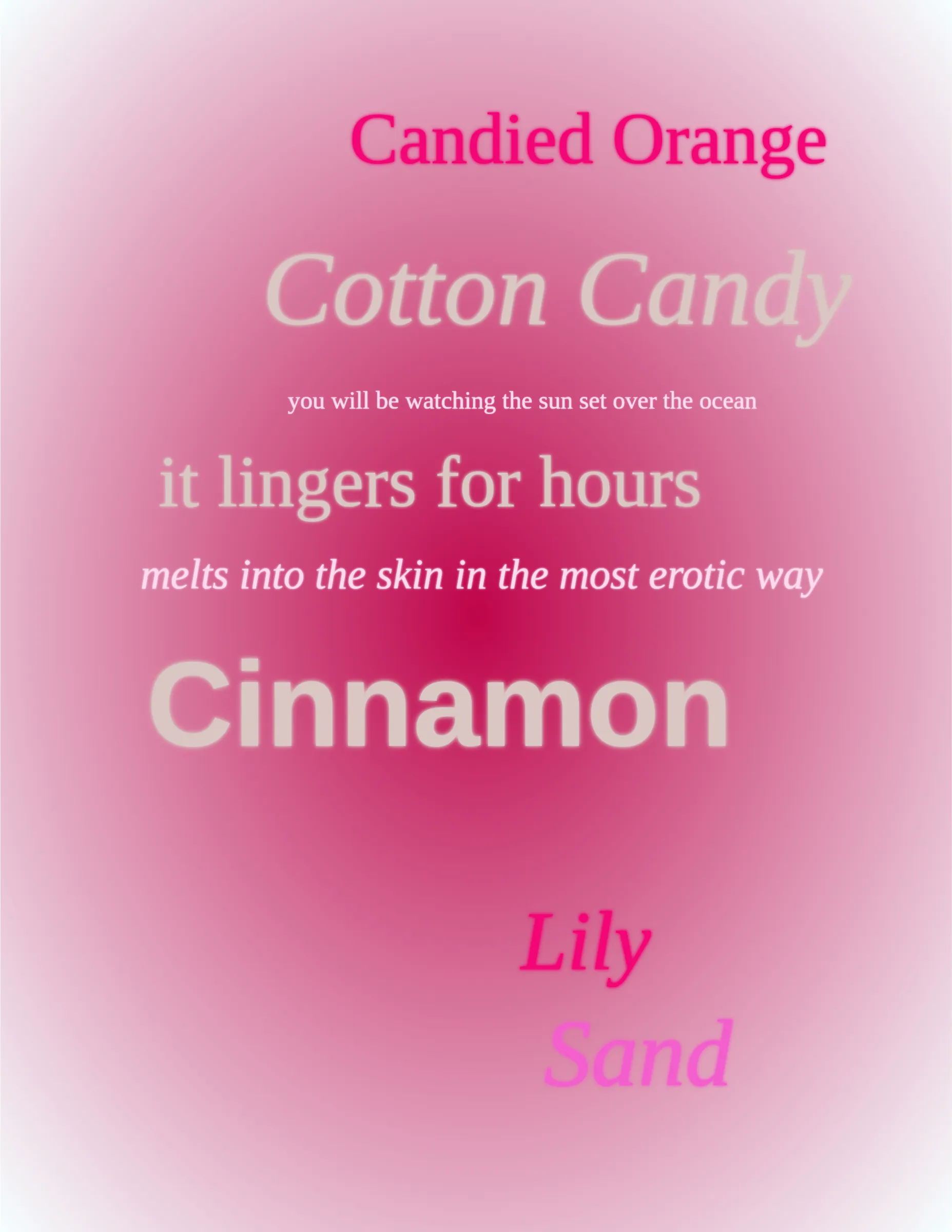Subscribe to get the latest on artists, exhibitions and more.
In Conversation with Maya Man: I'm Feeling Lucky

Leyla Fakhr: The title of your upcoming in September exhibition is ‘I’m Feeling Lucky’. You mentioned this makes reference to a feature of Google search, can you elaborate on the themes of this exhibition?
Maya Man: The title directly references the ‘I’m Feeling Lucky’ button that has lived on the google.com homepage since Google came out in 1998. It’s evolved over the years in a way that, to me, really parallels the commercialization of the internet. It actually no longer maintains its original function of taking people directly to a website because that was costing Google money. Now instead, it just randomly places whoever clicks on it back into the Google universe somewhere. But, my fascination with this button stems from the way it presents this concept of luck, which is predicated on chance, as intertwined with a piece of software that’s been super instrumental in shaping the way that people around the world use the internet today.
This exhibition with Verse focuses on the rising popularity of astrology within online culture. People use horoscopes as a method of meaning making. For me, it’s always felt like deriving meaning from randomness, a practice I find increasingly alluring. You always hope your horoscope tells you what you want to hear about yourself. Similarly, the “I’m Feeling Lucky” Google button was designed to take users, hopefully, directly to the place they want to go online. Faith in stars, faith in software!

Leyla Fakhr: You work in a variety of mediums, ranging from embroideries to installations and employing code and algorithms. How do you determine which medium to use and how do you feel navigating between Web3 and the more traditional art world (given there are some push backs from the latter)?
Maya Man: I make work in the form that the concept calls for. I’m very conceptually driven. Many parallels have been drawn between origins of conceptual art and generative, algorithmic art, but the notion of explicitly privileging the idea resonates a lot with me and my practice. Code has always been at the core of my practice. It feels very natural and necessary for me to use software to think through concepts related to the internet. But that’s not a limiting factor for me. Sometimes, it makes more sense to represent an idea through an installation or a physical piece.
I find it frustrating that, for so long, people who work with software have been sidelined by an old school art world that only focuses on traditional, marketable mediums. Before Web3, the file based form of art-making had little commercial value, so galleries rarely would show artists who work in that medium. I’m not interested in a distinction between my personal practice in Web3 and the traditional art world. To me, the work is the work. It’s other people that like to slice it into categories.

Leyla Fakhr: In comparison to your previous series 'FITYMI,' how does this new series continue and evolve? What are the key connections or progressions between the two?
Maya Man: FAKE IT TILL YOU MAKE IT released on Art Blocks about one year ago and I have not released another long form collection since then. I’m so excited to share I’m Feeling Lucky as a kind of follow up to that first series because they share a lot of similarities, but at the same time are totally distinct. At their core, both collections grew out of my desire to analyze the ways that we try to make meaning and understand ourselves in a very secular, very digital world. FITYMI focused on a specific genre of Instagram graphics that I saw as emblematic of a slice of contemporary culture. Similarly, I’m Feeling Lucky takes a lot of inspiration from astrology apps like Co-Star and The Pattern which represent a desire for accessible structures that help us understand ourselves. After I moved to Los Angeles in 2021, I felt surrounded by conversations of signs, your birth time, your moon and rising. I simultaneously feel a sense of indulgence and skepticism when it comes to these subcultures which draws me to them. It’s super fun, but I’m also like why are we celebrating this form with such enthusiasm when there’s so little basis for its efficacy? It feels nice to believe in something.
With I’m Feeling Lucky, I’m excited by the idea that collectors can peel away the layers of this project and find meaning in a mint. Do you believe in the power of software to tell you who you are? Do you think the universe is dictating the specific conditional statements you hit when you mint? I do.

Leyla Fakhr: Your work explores how the internet is used as a means to find answers to wellness, character building, and bettering life in general. Maybe even like a modern day oracle that has the capability of find answers to all questions in life. Do you feel that this increases pressure to reach perfection with all the tools available?
Maya Man: We are living in a culture that pressures us toward constant and exhaustive personal optimization from all angles. I feel so haunted by this mindset, seeing girls waking up and drinking lemon water and going to pilates. And also girls waking up, posting angsty absurd memes, and opening their solo show in New York or whatever. It’s all freaky achievement allusion and strangely compelling. I feel part of it all too which is why I want to talk about it.
Ann Hirsch and I discussed this a lot with our collection Ugly Bitches. There’s a necessity to not only present as perfect on the outside, but also as morally perfect on the inside. A lot of my work digs into this feeling and tries to emphasize the absurdity and impossibility of this condition.
Leyla Fakhr: Your exploration of femininity and identity on the internet is compelling, especially in an age of extensive sharing of personal information with a broad audience. In a previous interview, you mentioned feeling uncertain about how to 'perform' on social platforms. Do you think our online identity is entirely constructed, lacking any genuine reflection of our true character?
Maya Man: I think it’s entirely constructed, but reflects personal aspirations. If you’re posting, you are producing a representation of yourself, there’s no way for it to be “true” because character can’t map to pixels that way really. It all feels very rendered. In Debord’s concept of the spectacle, images are a reconstruction of the material world, but in the process become the immersive world we live in instead.

Leyla Fakhr: Could you share some decisions of bringing in certain typographies and aesthetics that you incorporate into your generative practice. How do you decide on them, and how are they shaping your work?
Maya Man: My practice emerged from my experience growing up with the internet. With my generative work, aesthetically, I’m interested in the output looking obviously digital rather than trying to mimic a physical texture or form. I tend toward browser defaults, especially when I work with type. Recently, so much of my work has been language driven and you will see that I often use the web safe fonts in their raw “serif,” “sans-serif,” “cursive,” etc. forms. I also use a lot of unicode characters. In my piece 𝓡𝓮𝓪𝓭 𝓲𝓽 𝓪𝓷𝓭 𝓦𝓮𝓮𝓹, I call those strings of symbols “internet trash” because I feel like they are just littered across websites to add emotion and sparkle and they feel very internet native to me.
I’m very drawn to the era of net.art and often engaging with that aesthetic. But my work firmly situates itself in a contemporary context with its themes, process of circulation, and use of JavaScript.

Leyla Fakhr: How do you get inspired? And where do you see your practice go in the near future?
Maya Man: By living! I think in comparison to many other generative artists who work with code, my work is often very personal. That has a lot to do with being a girl, growing up hyper aware of the way I am perceived online and off, and obsessing over the absurdity of it all. I’m very inspired by girl culture online.
I’m also very inspired by artists who for years fearlessly intertwined their practice with technology even though historically it has not been an appreciated path. It sounds dramatic, but my desire to engage with the internet in the way that I do feels very fateful.
Leyla Fakhr: Can you please expand on your thoughts on the traditional art world in relation to the Web3 community?
Maya Man: I think that the Web3 community that is engaging with art in a serious way grew out of necessity, because the traditional art world has never really fully accepted or celebrated artists who work with software, so they needed a different avenue. For artists, it’s important to find a way for your work to be shown so that people can engage with it, and many Web3 platforms have provided that opportunity.
But to be honest, I feel a bit of a fear of being labeled as a “Web3 artist.” It’s about so much more than that to me. There is a lot that makes the community extremely special, but there is also a lot of noise in the space. I believe there needs to curation, exhibitions, and criticism present. Those roles contextualize, support, and create conversations around artists’ work in a way that is really productive and essential.
I guess basically, I would love to see each world take the other more seriously.

Maya Man
Maya Man is an artist focused on contemporary identity culture on the internet. Her websites, generative series, installations, textiles, and posts examine dominant narratives around femininity, authenticity, and the performance of self online.
She is the creator of the browser extension Glance Back and the Art Blocks curated collection FAKE IT TILL YOU MAKE IT. She has exhibited internationally...



